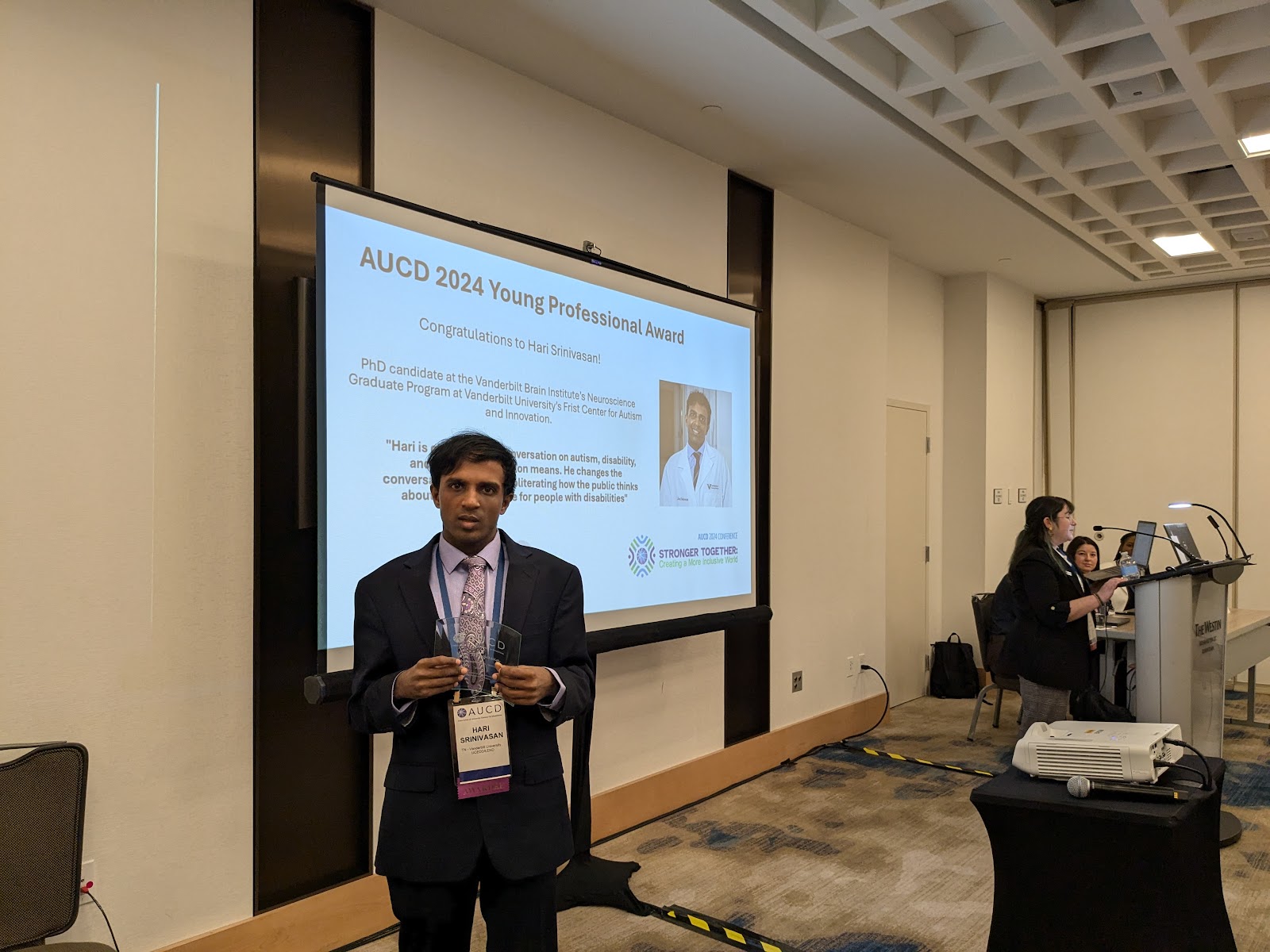Caught Between Tears and Stoicism
My TedX Talk
My Ted X talk titled "Pebbles in the Pond of Change
Hari Srinivasan, shares a powerful message about the power of small actions in creating ever-widening ripples in the pond of change. Drawing from personal experiences and the legacy of disability rights leaders, he redefines progress as a journey that starts with simple, accessible steps. His inspiring message encourages everyone to identify and act on their own "small pebbles" to drive societal transformation.
Social Model of Disability and Neurodiversity
- Societal Influence: Both argue that the primary challenges faced by disabled individuals come from society's structure, attitudes, and policies rather than inherent flaws within the person. Barriers to inclusion (physical, attitude, communication) are highlighted.
- Advocacy for Inclusion: Both emphasize the importance of reshaping societal norms, environments, and policies to be more inclusive and accommodating, thereby fostering greater acceptance and understanding.
- Agency and Identity: Both encourage individuals to embrace their identities and advocate for a society that respects diverse ways of functioning, viewing these as part of a human spectrum rather than problems to be "fixed."
- Critique of the Medical Model: Both models reject the traditional medical model, which views disability primarily as a deficit within an individual that requires intervention. Instead, they argue for a broader understanding that includes systemic and societal factors.
- Scope and Origins: The Social Model, originating in the broader disability rights movement, addresses all disabilities, focusing on how society disables individuals through barriers and prejudice. Neurodiversity, specifically pertains to neurological variations like autism, ADHD, and dyslexia, emphasizing that neurological diversity is a natural part of human variation.
- Difference v Disability: Neurodiversity emphasizes the concept of "difference" rather than "disability," suggesting that conditions like autism are part of natural variation rather than inherently disabling. The Social Model, however, focuses on disability as a socially created issue, regardless of the nature of the impairment.
- Framework of Disability: The Social Model views disability as an interaction between a person with an impairment and an inaccessible society, focusing on environmental changes. Neurodiversity, by contrast, views neurological differences as variations with both strengths and challenges, advocating for acceptance of different cognitive styles and capacities.
- Individual v. Collective Identity: Neurodiversity often highlights individual strengths and contributions specific to each neurological type, particularly emphasizing the value of traits seen in neurodivergent communities. The Social Model, meanwhile, focuses more broadly on collective experiences and solidarity among disabled people against shared barriers.
Both models advocate for a society that values and adapts to diversity, but they apply these principles in distinct ways based on their different foundations.
IDEA
Understanding the Individuals with Disabilities Education Act (IDEA)
In her memoir "The Heumann Perspective," the late legendary disability rights activist, Judy Heumann recounts how she was refused entry to public school as a child because she was deemed a "fire hazard." Her story sets the stage for understanding the importance and impact of the Individuals with Disabilities Education Act (IDEA).
IDEA was born out of a broader movement for disability rights in the United States, heavily influenced by the civil rights movements of the 1960s and 1970s. Before its enactment, many children with disabilities were excluded from public education or received inadequate services. Recognizing the need for federal legislation to protect the educational rights of these children, the Education for All Handicapped Children Act (EHA) was enacted in 1975. This marked a significant shift towards inclusive education and equal opportunities. On October 30, 1990, the act was reauthorized and renamed the Individuals with Disabilities Education Act (IDEA). Further amendments in 1997 and 2004 were made to better serve students with disabilities, ensuring they have access to a free and appropriate public education
Influential Figures in the Making of IDEA
Several key figures and advocacy groups played pivotal roles in the development and implementation of IDEA:
Judith Heumann: A lifelong disability rights advocate, Heumann's activism and leadership, particularly through her work with the Center for Independent Living and her role in the U.S. Department of Education, were instrumental in shaping policies related to special education.
Tom Harkin: A U.S. Senator known for his strong advocacy for disability rights, Harkin played a significant role in the passage and reauthorization of IDEA, ensuring that the needs of students with disabilities were addressed in federal law.
Parent Advocacy Groups: Organizations like the National Association for Parents of Children with Visual Impairments (NAPVI) and the National Down Syndrome Congress (NDSC) were crucial in lobbying for the rights of children with disabilities and the creation of IDEA.
Key Provisions of IDEA
IDEA is designed to ensure that children with disabilities receive a free and appropriate public education (FAPE) tailored to their individual needs. The main provisions of IDEA include:Free Appropriate Public Education (FAPE): Ensures that all disabled children have access to public education at no cost to their families.
Individualized Education Program (IEP): Requires schools to develop an IEP for each student with a disability, outlining specific educational goals and the services the student will receive.
Least Restrictive Environment (LRE): Mandates that disabled children should be educated alongside their non-disabled peers to the greatest extent appropriate.
Parental Participation: Ensures that parents are involved in decision-making processes regarding their child's education.
Procedural Safeguards: Provides protections for students and their families, including the right to due process hearings and mediation to resolve disputes.
Evaluation and Eligibility: Establishes criteria for identifying and evaluating children with disabilities to determine their eligibility for special education services.
Fidget Stim Toys and Autism
How Autism Changes Perception
Seeing the World in More Detail: Enhanced Perception
Imagine walking into a busy street market. Most people see a blur of color and activity, a rush of sounds blending together—a vibrant but overwhelming scene. But for some autistics, this moment might feel different. They could notice the intricate patterns on the fabrics hanging in a shop, the slight variations in pitch from different voices, or the distinct texture of the pavement underfoot. These details pop out in a way that others might miss.













